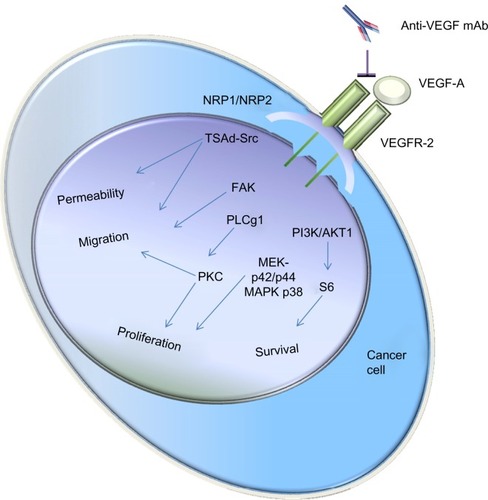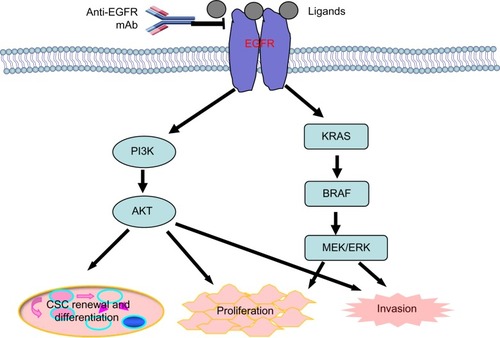Figures & data
Figure 1 Schematic representation of how the VEGF-A signaling pathway is linked to its main biological functions.
Abbreviations: mAb, monoclonal antibody; NRP, neuropilin; VEGF, vascular endothelial growth factor; VEGFR, VEGF receptor; PKC, protein kinase C; PLC, phospholipase C; FAK, focal adhesion protein; TSAd-Src, T cell-specific adaptor protein containing an Src homology.

Figure 2 An overview of the EGFR pathway and its main downstream effectors, PI3K/AKT and KRAS/BRAF/MEK/MERK.
Abbreviations: EGFR, epidermal growth factor receptor; mAb, monoclonal antibody; CSC, cancer stem cell.
